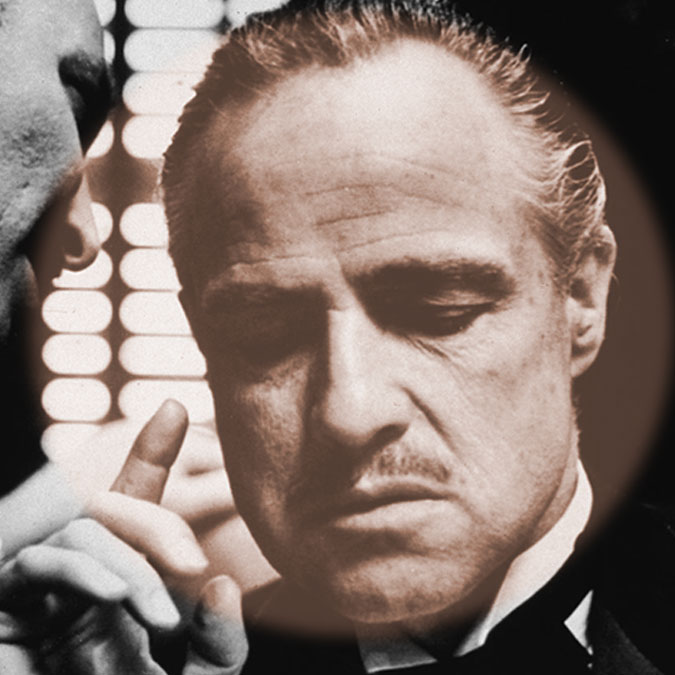Character motivations
Toolbox articles are shorter-form pieces that explore the writing craft, like point-of-view narrative and tension. Sign up to our newsletter to receive these articles direct to your inbox, before they’re published on the site.
For anyone of you who has studied creative writing, or researched the best ways to develop a fictional character, you will have surely come across the term ‘motivation’. Indeed, it’s a term we use regularly here at fetish when analysing short stories.
But what exactly does ‘motivation’ mean in the context of fiction writing – in particular, character development – and why is it considered to be so important?
What are character motivations in fiction?
A fictional character’s motivation is just like motivation real people have in their daily lives. It is a desire to achieve a certain goal. This goal could be related to wealth, power or love, just to name a few examples. It could even be a literary blogger wanting to make a great success of his website!
As always, though, fiction and real life do differ. In real life, we have many motivations of varying importance that come and go. We might, for instance, be motivated on a particular day to go shopping or cook a delicious dinner. These are perfectly reasonable motivations to have, but they’re not exactly the makings of a great literary masterpiece.
In fiction, great characters usually have compelling motivations with high stakes. These motivations need to be incredibly important, with characters willing to go to great lengths to achieve them. Our literary blogger’s motivation, for instance, would only work in a fictional context if it were his greatest objective, one that he was willing to do almost anything to achieve. If it were simply a flight of fancy, or among a number of other equally important motivations, it wouldn’t exactly make for a compelling character trait.
We should also note that well-written character motivations are always key to and intertwined with both the character’s personality and the story’s principal plot. A character’s motivation should play a strong part in defining both his/her personality, plus the direction the story is going in.
Why are character motivations important?
Okay, so we’re clear on what character motivations are and how they tend to operate, but why are they often held in such high-esteem as a fundamental pillar in fictional character development?
The first answer to that question is all about the reader-character connection.
Any strong, well fleshed-out character should have a number of qualities that help a reader to better engage with them. Characters need to be believable. We need to feel emotion toward them. Great characters can be likeable or hateable – but it’s important that we, as readers, care about what happens to them.
A compelling motivation is a fantastic quality to have. Not only does it make them more believable characters, it also makes them more engaging. It gives us readers something to invest in. We’re able to cheer them on when they succeed or relish in their downfalls.
The second reason that character motivation is important is because it’s one of the principal drivers of conflict.
Conflict is an incredibly powerful storytelling device, and is often central to the most memorable and intense parts of a story. Think about Jay Gatsby’s face-off with Tom Buchanan in The Great Gatsby, or the showdown between Atticus Finch and Bob Ewell in To kill a mockingbird. These are moments where the words pop off the page and leave us readers with our hearts in our mouths. They’re often central to making great fiction great, and they wouldn’t be possible without strong character motivations behind them.
When done well, compelling motivations can push characters to their limits. Especially when the writer places obstacles in their way, such as different characters with opposing motivations. It creates a scenario akin to an immovable object meeting an irresistible force. Two characters fighting against one another to achieve their respective motivations often makes for great conflict.
If we return again to our literary blogger for a moment, let’s imagine he has a strong motivation to turn his newsletter into a successful venture. Let’s also imagine that he has a rival – someone who stands in the way of his success. In doing so, we create conflict. If written well, every time the two characters come into contact, there will be tension and drama. And we, the reader, are left wondering how far our literary blogger will go to defeat his rival and achieve his ultimate motivation.
Motivations in Romeo and Juliet
Let’s take a practical approach and see how character motivations work with a tried-and-tested example. Don’t worry, I’m not going to continue fleshing out the slightly wobbly story of our literary blogger. Instead, we’re going to take a look at one of the greatest stories of all time, William Shakespeare’s Romeo and Juliet.
Compelling character motivations almost invariably play a huge role in Shakespearian drama, and Romeo and Juliet is a great example of that. (Not least of all because I can be sure that most people will know the plot quite well!)
The story starts off by introducing Romeo. His desperate and unrequited love for Rosalina not only kicks off the plot (as well as teeing up his meeting with Juliet) but also presents Romeo’s character – he is romantic and melancholic. He’s someone motivated by love, and it’s that motivation that remains consistent throughout the play.
This motivation is a vital piece in building Romeo, and later Juliet, up as characters. It shows the young lovers as intense and passionate adolescents. It helps the audience to better visualise them. We sympathise with Romeo and Juliet, we get to know them and we want them to succeed in their shared motivation of ending up happily ever after together.
This motivation also serves as a key driver for the plot. As we know, on the other side of the story, there is the infamous feud between the Montagues and the Capulets, Romeo and Juliet’s respective families. They have their own motivation – a self-preservation fuelled by their mutual dislike. And it falls into complete opposition with the blooming motivation of the two star-crossed lovers. How can Romeo and Juliet be together when their families hate each other’s guts?
These opposed and seemingly impossible-to-reconcile motivations – Romeo and Juliet’s desperate desire to be together versus the families’ feuding – is what drives the story forward. It creates conflict. And without it, the story’s key and escalating moments wouldn’t happen, from the deaths of Tybalt and Mercutio all the way through to the young lovers’ tragic ending.
Just how important are character motivations in fiction?
There’s no doubt that motivation plays a strong part in what makes Romeo and Juliet so great. The motivations of the entire cast (even secondary characters) create living, breathing characters plus a suite of conflict and drama to boot. But away from epic, family-feuding tragedies, is character motivation always essential in fiction?
As we’ve already seen, it would be hard to imagine an engaging fictional character without motivation, nor a decent plot not driven by motivated characters. But is motivation the most important factor when creating compelling fiction? Does motivation have to be such high-stakes as it is in Romeo and Juliet, or can it be more reflective of our real-life everyday (maybe even mundane) experiences? And do characters have to have innate motivations, or can they grow, change and evolve throughout a piece of fiction?
Try it at home
Why not think about character motivations in the fiction you’ve been reading recently? Make a note of the story’s main protagonists and antagonists. Did they have any discernible motivations? Do they play a part in the character arc? Do their motivations contribute to the story’s conflict and drama?
Writers, you could try this with your own work. Think about the role that motivation plays with your characters. Is it recognisable to a reader? Are your characters’ motivations integral to their personalities, and do they help to drive the plot forward?
Go a step further
Read our analysis of ‘Hills like white elephants’, where we look at the opposing motivations of the two characters and how that leads to conflict. We hope it will give you a greater insight into some of the ideas around different types of character motivations discussed in this article.



